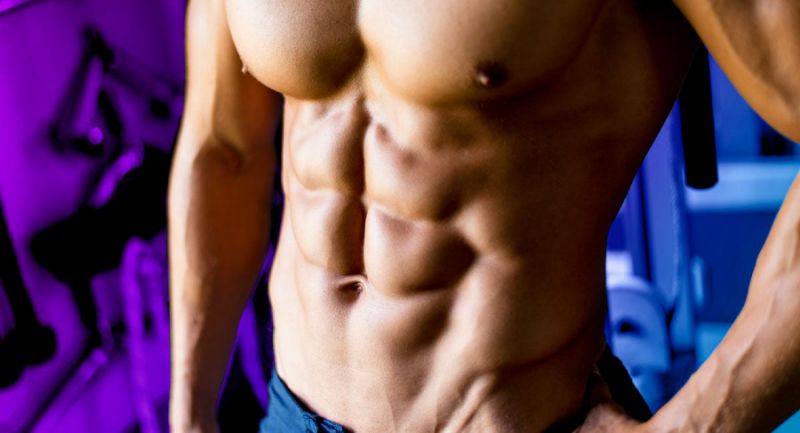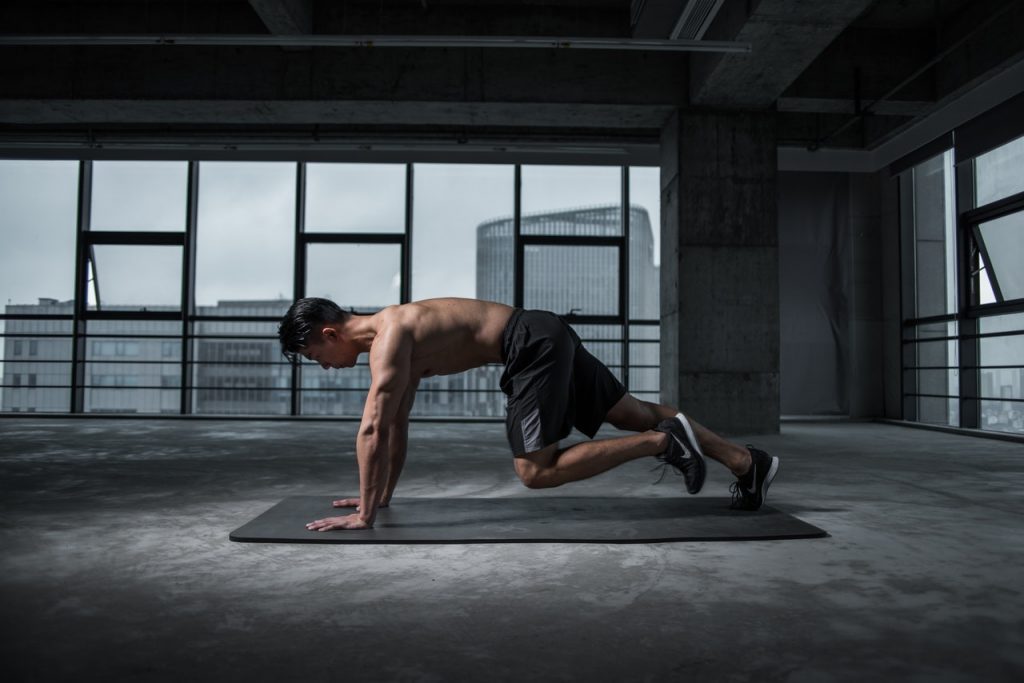
The best online fitness resource you'll ever need. We filter out the BS to ensure you meet your health and fitness goals!

The best online fitness resource you'll ever need. We filter out the BS to ensure you meet your health and fitness goals!

It is always a good idea to work your core muscles, to build your abs and obliques for strength. However, there is very little point in building all that muscle if you can’t recruit it when you need it- when you’re under that heavy bar, going for a sprint record, or taking on an opponent sparring. Indeed, you will struggle to build muscle through your midsection at all if you’re not activating your core muscles during training.
This is a surprisingly common situation. People just aren’t activating their core and engaging the muscles therein.
It’s always a good idea, therefore, to put some specific core activation exercises into each training session, at the beginning, as you warm up. To be clear, we’re not talking about core exercises aimed at hypertrophy or endurance: these can, and should, be performed at the end of any given workout. Here, we are talking about activating your mind muscle connection and warming up the muscles of the core so that they are supporting you as you train.
Also known as attentional focus, mind muscle connection is the act of consciously feeling a muscle activate and work through a full range of motion. Improved mind muscle connection can enhance muscle fibre recruitment and activation: the more fully and effectively you engage your muscles, the more fully they can work- lending you strength as their contractile potential is realised- and the more they’ll grow.
Your core muscles, specifically your abs and obliques, play a vital role in pretty much every movement your body performs. They aren’t simply there to be washboards to make you look good on the beach: they are necessary for any athletic function. When you train, your core muscles:
Basically, your body cannot function without your core, so it’s a good idea to make sure your core is working optimally. For this, we need to activate as much muscle mass as possible. With this in mind, we’ve put together a list of five of the best core activation exercises you can incorporate into your warm ups.
When we’re talking about the core, there are plenty of muscles that suddenly become relevant. The exercises below will run through them quite comprehensively, so that you can get as many muscle fibres firing and increase the mind-muscle connection as much as possible. However, there are a few central muscle groups that form the core of the core, so to speak.
These are:
Between these six muscle groups, there is little in your midriff and torso that remains unsupported. If you don’t get these prepared for your training and the load you’re about to put your body through, your risks of both getting injured and of seeing your performance dip will be greatly increased.
If your core and glutes aren’t properly warmed up and activated before squats, your spine will take the load; if your hamstrings and core aren’t warmed up and activated before deadlifts, the same will happen. If your abs and obliques aren’t prepared for your bench press, your foundation will crumble and no amount of pushing will move that bar, and no amount of leg drive will keep you safe and stable on the bench.
To avoid this, you want to spend 5-10 minutes at the beginning of every session working through a couple of the exercises listed below. You shouldn’t tax yourself: we’re not here for conditioning or strengthening, as that will come at the end of the session. Simply move through each exercise and feel every pertinent muscle begin to wake up.

It’s common enough to take too small a view of the core. Many people- including trainers- neglect it entirely, thinking that large compounds are all that are needed to keep it functionally strong. Others go for beach muscles- countless crunches to make their six-packs pop, with very little that’s actually useful being done.
Having ripped abs and having good core stability are nothing like the same thing.
As the great Brian Alsruhe puts it, you want to think of your core like a soda can. When it is unopened, it is hard to crush from the top. When it has been shaken up, this is even more the case. However, as soon as you open it, even a child can crush it. In this analogy, the sides of the can are your core muscles and the bubbles in the soda when it has been shaken up come from a combination of core activation and a proper brace- putting them to work to keep your body stable.
Both strength and stability are separate beasts: you want them to work together for either to be worth anything.
Core strength relates to primary movers like your rectus abdominus, and roughly relates to how much mass they have and how used they are to working under load. Having a strong core is obviously a good thing. There is no point in learning how to activate your core if there is little muscle there to activate. You will always want to devote a good portion of the end of every training session to building up muscle around your abs and obliques in particular.
Core stability, however, is something else entirely. Mechanically, core stability is the ability to keep your spine and pelvis aligned and balanced through whatever stresses your body goes through. This requires the deep core muscles listed above to be online, responsive, and able to adapt.
Having good core stability means being able to recruit this muscle mass and switch it on at will, so that your body can resist more pressure than it otherwise could. Good core stability also means that your core can respond to different directional forces, different positions, and different loads rapidly- this will keep you safe in day-to-day life as well as in any athletic pursuit.
Think about the process of performing a back squat. If you tip a bar with your own bodyweight or more loaded onto it, there will be a lot of force suddenly lurching to one side. Your core needs to compensate for this, bringing it back to centre, or at least keeping you safe as you drop the bar backwards. Your core also needs to brace in concert with your breath so that, as in the soda can analogy, all the weight pressing down into you doesn’t bend you over. Your spinal integrity remains intact and your body’s ability to stay strong under tension allows you to exert more power and lift more weight whilst staying safe.
It is easy and common to be strong, active and healthy, whilst still suffering from a weak core. It’s easy and common to be completely unaware that your core is weak. You can train five days a week, pushing yourself as hard as you like, whilst still not being able to activate your core.
If you suffer from any of the following symptoms, this may well be you:
These could all be signs that your core is not aiding you as much as it should be: that it is remaining largely inactive during training. If any of the above apply to you, you should definitely consider adding in some core activation exercises like those listed below.

As mentioned above, what we commonly call the ‘core’ consists of many muscles. Their activation and interaction is what causes core stability- and their lack thereof causes core instability. These muscles are vital in maintaining a functioning core and decent level of athleticism.
However, there is more to the core than simple musculature. There are two additional systems involved in core stability. The first of these is skeletal: it includes the spinal, pelvic and hip bones. These bones play host to the core muscles and, as you may imagine, are therefore crucial in maintaining stability and resisting and channelling the forces and motions our bodies deal with on a daily basis.
The second system is nervous. This is perhaps the most important component in core stability found lacking in many athletes with otherwise good musculature. It is responsible for the reflexive and conscious control of muscles: neuromuscular control is vital in any athletic endeavour, is often the fastest strength component to adapt to new stimulus and will more often than not be the difference between success and failure.
This neuromuscular control is a large part of what we will need to be training in the coming exercises: without it, muscle mass cannot function, no matter how strong it has the potential to be. Training the neurologic system will form the foundation of core activation training.
One of the key ways in which to train the neurologic system is to reach for new stimulus, as you would when training anything else. In this case, new stimulus will be derived in large part from pacing the body in positions that are difficult to maintain. This will provoke reflexes that for the body to stabilise major joints under duress, eliciting basic neural response.
Several of the exercises below are put together exactly with this in mind: they will force your body to self-stabilise, thus strengthening the mind muscle connection across your core. They will hit the major core groups, the primary stabilising muscles.
Aside from this, we want to look for proper motor patterning through the core as part of our neurologic training. Essentially, we are teaching your body to activate the deeper muscles of your core, learning to switch them on and use them mindfully. This kind of deep core activation is often sorely overlooked in athletic training, leading to the problems we have already run through.
Let’s take a look at the exercises themselves.
The humble plank is one of the best exercises you can find for working neuromuscular control through the core. It will cause your abs to contract, you spinal erectors to keep you stable, and your breathing to align with the hold.
The key is in keeping your hips up, in line with your shoulders, whilst pulling your feet towards your shoulders. Everything suddenly switches on: you should feel your rectus abdominus wake up.
Building on the plank, the side plank is perfect for a few things.
Firstly, it works everything involved in the plank whilst firing up the obliques in addition. If there is any weakness through your obliques, the side plank will show it up. It will also teach you to really feel them, as deep as they go, allowing for greater mind-muscle growth.
Secondly, you will also be working shoulder stability in conjunction with core. Your shoulder girdle and upper back will need to be as active as your abs, obliques and hips, lending a greater degree of stability through the entire torso.
To perform a side plank:
The beast hold is an incredibly tight, compact position that required deep core activation, drawing your stomach in to force your core muscles to fire.
To perform a beast hold:
We’re beginning to move away from the trunk a little with this one, instead moving much of the pressure into the hip stabilisers. This will be a great preparatory exercise for any heavy leg work, like squats, lunges and leg presses.
To perform this exercise:
Let’s round this all off with the glutes, one of the most important muscle groups both for core strength and overall athletic performance. Glute bridges work them in conjunction with your adductors and deep abdominal muscles, and will help you to avoid long term hip, knee and lower back pain.
To do glute bridges:
If you suffer with any of the symptoms we have gone through today, you will want to urgently rethink your core health and bring in some of these activation exercises. Even if you’ve noticed nothing untoward in your core, you will want to include some activation work. Learning to correctly bring your full core into every rep of every exercise will keep your safe in the long term and improve your strength almost immediately, enabling you to place your body under greater stress, eliciting greater adaptation.